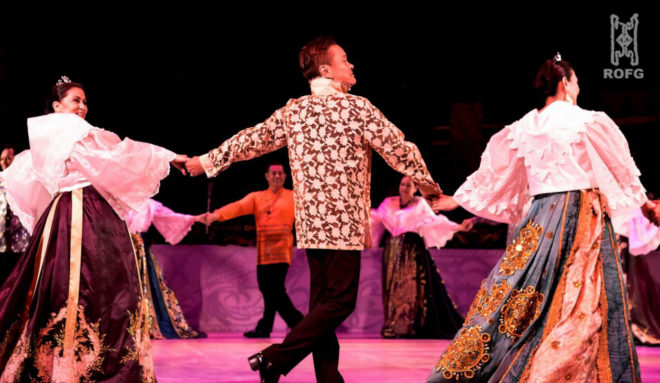
For many generations of folk dance artists, the home of the late National Artist for Dance Ramon Obusan was a haven for learning and practice. Obusan’s precious legacy of research, as well as his staging and choreography of Philippine folk and indigenous dances, has been passed on to many students and dancers through the workshops and rehearsals held in the busy compound in Pasay.
Though this body of work and the learning derived through these are the greatest treasures of the Ramon Obusan Folkloric Group and Foundation, there are other tangible treasures through which students and educators can learn of the various cultures of the Philippines. The late National Artist was a voracious archivist for whom documentation was of primary importance. The Obusan archives are a treasure trove of his audio and video research, all recording his many years of immersion and study with the various indigenous and folk peoples whose dances and rituals he recorded and recreated. As of today, there are 300 hours of digitized research materials covering 35 years of fieldwork conducted by the National Artist himself.
He was also a dedicated collector of textiles, artifacts, musical instruments, adornments and ritual objects acquired from the field. Many of these objects have found a second life when actually used for the group’s performances. Others, more fragile and precious, have been replicated faithfully to withstand the wear-and-tear of performance.
Through workshops, training and interaction with student groups from all over the country, this legacy of research, staging and performance has expanded Obusan’s life work. Many folk dance groups now regularly use the staging and performance techniques that were created by Obusan and then refined and developed by his core group of senior dancers and teachers.
All this would have greatly pleased the late Obusan, who specified in his will that his house and collections be used “as a repository of cultural heritage for the purpose of education and teaching, so that many more generations will benefit from the knowledge.”
On Sept. 21, the house in Pasay becomes more than a rehearsal studio and training ground for aspiring folk dancers. As “Bahay ni Kuya,” it becomes a learning resource center for Philippine Folk Arts, traditions and performance. As such, it will now open its doors to scholars, researchers, indigenous people’s communities and art and cultural institutions.
A framework developed by the late Obusan’s sister, Dulce A. Obusan (now the administrative director of both the Ramon Obusan Folkloric Group as well as a trustee of the family foundation), states that the Bahay ni Kuya’s primary objective is “to preserve, safeguard , develop, transfer and popularize Filipino traditions through the education of artists, students, scholars and teachers.”
The eventual publication of a catalogue of the available research materials (both audio and video) as well as the material collection will be of great help not only to those who are interested in Philippine folk dance and music, but to those with a keen interest in the material culture of the Maranao, Yakan, Tausug, Maguindanao, Ifugao, Kalinga, Itneg and other indigenous cultures.
The Batang ROFG Annual Summer Program for community children and the year-round training and lecture demonstrations, which have become signature programs of the ROFG, will continue, says Dulce. “It will be a busy time for all of us here, but we welcome it. But with the help and cooperation of the CCP’s Arts Education Department, we look forward to welcoming interested parties to Bahay ni Kuya.”
Bahay ni Kuya is at 094 Road 4, CAA Housing Area, Pildera II, Naia, Pasay City. A visit can be arranged by calling 8530794.